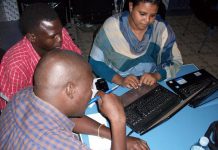
Audience research is essential if a newspaper is to remain relevant and generate revenue, but some publishers fail to gather adequate audience feedback.
In today’s dynamic media landscape, audience research isn’t a luxury for newspapers – it’s a survival imperative.
While circulation data provides a snapshot of reach, it’s a lagging indicator, revealing the effect of past decisions, not the cause of future trends.
Many publishers mistakenly rely solely on circulation, neglecting the vital insights that audience research offers.
Proactive insights, not reactive responses
Think of it this way: a change in your newspaper – be it editorial focus, content delivery, or distribution – triggers a delayed response in circulation.
Audience research acts as an early warning system, detecting shifts in reader sentiment before they translate into declining numbers.
Surveys reveal that reader dissatisfaction often precedes abandonment.
By tracking these subtle shifts, newspapers can proactively adapt, minimising the time lag between perception and action.
Understanding audience need
At its core, audience research fosters a deeper understanding of your readership. It dispels the dangerous assumption that your audience shares the same level of knowledge and literacy as your journalists.
In many contexts, particularly in developing nations, journalists are among the most educated in their communities.
Example: Papua New Guinea
Consider our research in Papua New Guinea. Despite the impressive English proficiency of local journalists, audience research revealed that the nuanced language used in reports was inaccessible to many readers, for whom English was a second language.
This highlighted the critical need for content tailored to the audience’s linguistic abilities.
Frequency, sources, and depth
- Frequency of reading: Don’t assume daily circulation equates to a consistent audience. Many readers are occasional, requiring content that recaps essential information.
- News sources: Recognise that readers access news from multiple sources, especially radio. Newspapers should focus on providing depth, context, and analysis, answering the “why” and “how” behind the headlines.
- Literacy and understanding: Tailor the complexity of your writing to your audience.
Relevance, engagement, and informed decisions
When journalists truly understand their audience, they deliver relevant information that empowers readers.
This, in turn, fosters engagement and enables informed decision-making, from daily life choices to civic participation.
Common pitfalls in audience research
- The “One Big Survey” trap: Investing heavily in a single survey limits your ability to follow up on emerging questions. A series of smaller, targeted studies provides more actionable insights.
- The “Do-It-Yourself” dilemma: Underestimating the complexity of survey design and analysis leads to flawed data and wasted resources. Professional guidance ensures accurate and actionable results.
- Sample bias: Unrepresentative samples skew results, often overestimating audience size. Rigorous sampling techniques are essential for accurate data.
Strategic approaches to audience research
Audience research encompasses two main areas:
- Measuring the audience: Primarily for attracting advertisers, this requires robust, third-party validation of readership numbers.
- Understanding the audience: This can be achieved through cost-effective methods such as consensus group techniques and semi-structured interviews.
Practical recommendations:
- Implement regular, small-scale research: Don’t rely on infrequent, large surveys.
- Utilise a mix of quantitative and qualitative methods: Surveys reveal “what,” while interviews and focus groups uncover “why.”
- Prioritise understanding over mere measurement: Focus on the “why” behind reader behaviour.
- Act on the insights: Research is only valuable if it informs editorial and business decisions.
- Consider professional guidance: Ensure your research is methodologically sound.
- Use low cost methods: Such as consensus groups, and semi structured interviews.
By embracing audience research, newspapers can move beyond reactive strategies and cultivate a deeper connection with their readers, ensuring their long-term relevance and sustainability.








